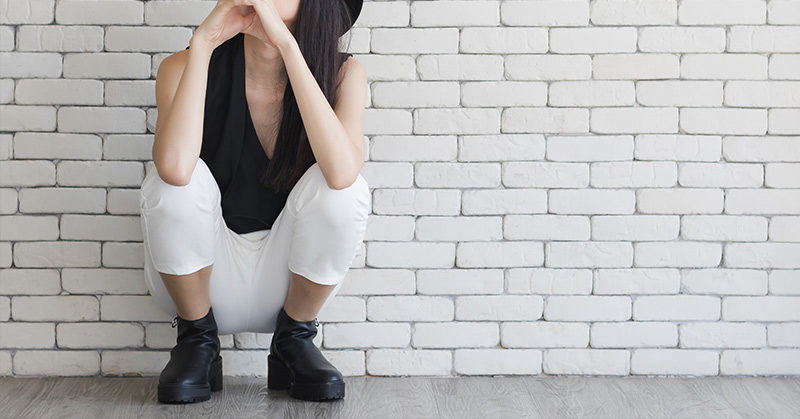Have you ever stopped to think about what we did before the invention of the chair? Sure, there were rocks and fallen trees to sit on, but for the most part, if a human wanted to avoid sitting in the dirt, they squatted. Well, as it turns out when it comes to squatting vs sitting, one may be better than the other. Humans have been squatting since the beginning of time, and even in today’s modern world many cultures still squat regularly to perform various daily activities.
In Western cultures, however, squatting has been almost completely abandoned. The standing versus sitting debate has, at this point, been settled. Scientists have told us that sitting too much is negatively affecting our health [1]. The squatting vs sitting debate, however, has begun, and so far squatting has taken the lead.
Squatting vs Sitting
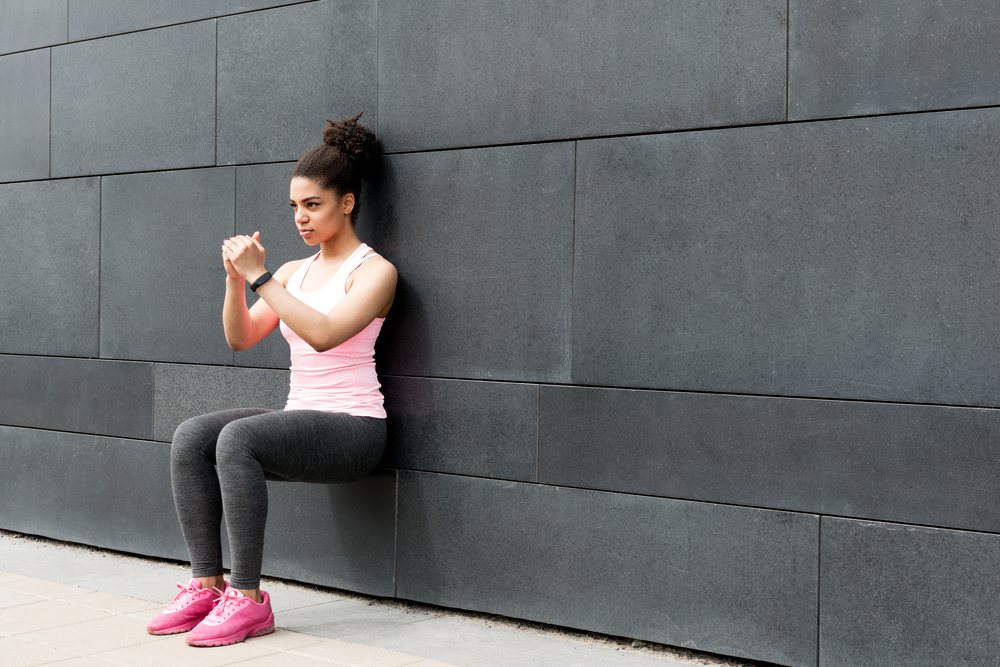
We have designed our world so that we never have to squat. There are chairs to sit at desks and dinner tables, sofas to relax and watch movies on, and toilets to use in the bathroom. We sit in our cars and on public transportation, we sit on benches at the park. Even some showers are designed with a seat.
A yoga guru once said that “the problem with the West is that they don’t squat”. But is this true? It appears that the answer is yes. Research is now telling us that it is not simply our constant sitting that is affecting our health, but also our lack of squatting.
Philip Beach is an osteopath who is known for pioneering the idea of “archetypal postures”. These positions include sitting cross-legged, kneeling on your hands and knees, and of course, squatting. Beach says that not only are these positions good for us, but that they are “deeply embedded into the way our bodies are built. You really don’t understand human bodies until you realize how important these postures are,” he said [2].
Read More: The Benefits of Deep Squats
Has the West Abandoned The Squat?
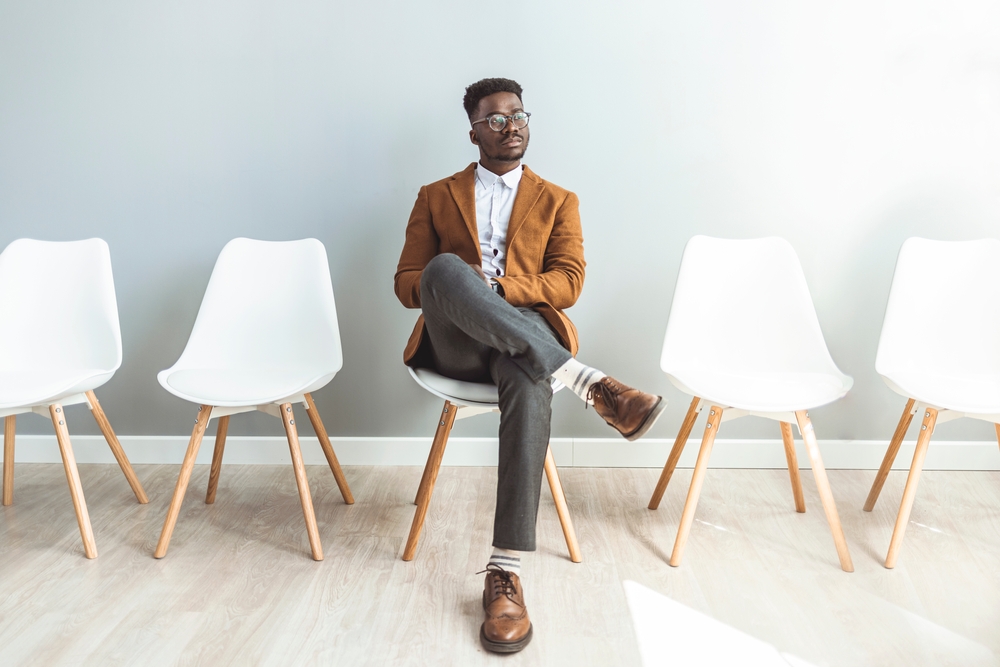
In Western Culture, however, squatting has become something we only do at the gym. Even then, allowing your knees to go past your toes is considered a cardinal sin. Deep squatting, without any weight on your back, is an evolutionary and developmental form of active rest. Today, however, most people don’t think of squatting as “rest”. It is seen as an uncomfortable position that should be avoided. How did we get here? As the old saying goes, if you don’t use it, you lose it.
“For most of human history, [the natural squat] has been our preferred modality of resting,” says Eric Schwarz, an American yoga teacher and life coach currently living in Perth, Australia. “But thanks to the invention of chairs, most of us in developed countries, at least, have forgotten how to assume it.” [3]
Why Squat When You Can Sit, Right?
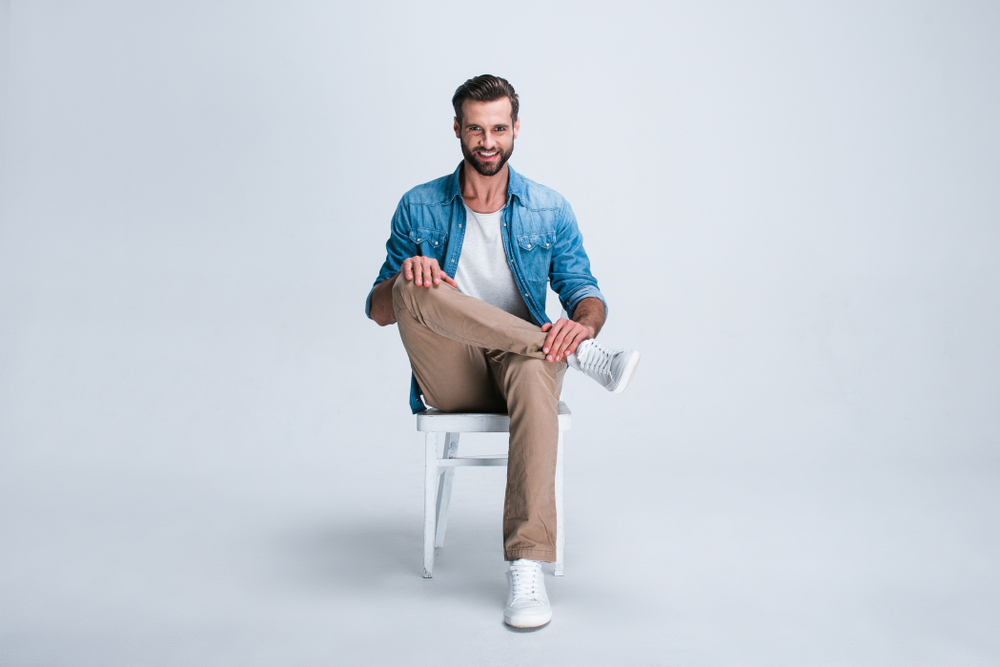
Schwarz says squatting isn’t easy for most of us because we’ve been raised in what he calls a “chair-phallic” culture. Squatting then, feels unfamiliar. “But in actuality, squatting is one of the most natural things in the world.” [3] Sitting has been linked to an increased risk of diabetes, heart disease, cancer, and early death [4]. The antidote most experts have prescribed for this has been standing. People like Schwarz are arguing that the solution should include both.
The Research is Limited
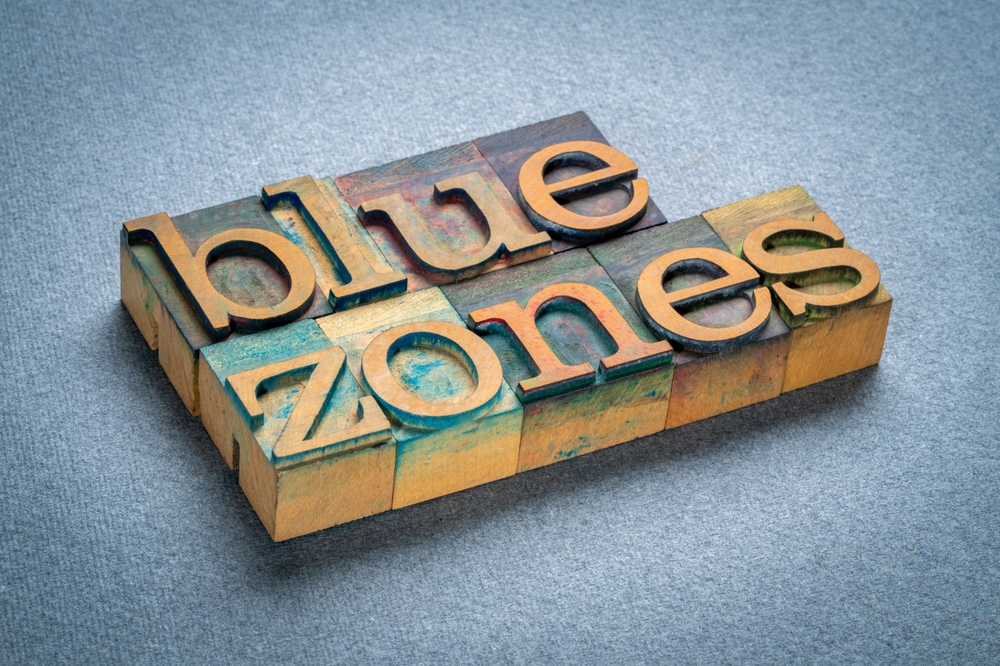
There is very little research comparing the health benefits of squatting and standing, but Schwarz points toward “Blue Zones”, the parts of the world where people live the longest, as examples. In these areas, Schwarz says squatting seems to be the one thing they all have in common. In these parts of the world, squatting is much more integrated into daily life. Certain tasks are performed in a squatting position. Meals are sometimes eaten that way. You have to squat to use the toilet.
Why is Squatting So Good For You?
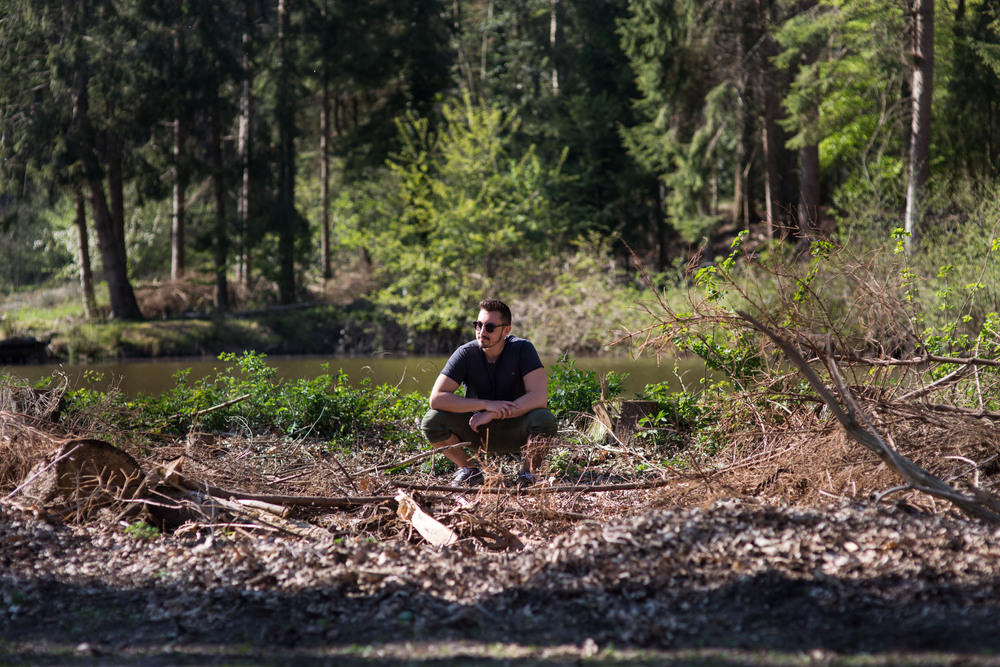
Every joint in your body contains synovial fluid. This fluid is like an oil in your body that provides nutrition to your cartilage. That fluid doesn’t just magically appear, however. Your body has to produce it. In order to do that, you need movement and compression. If your hips and knees never go past ninety degrees, you’re never putting your joints through a full range of motion. At this point, the body realizes that it’s “not being used”, and starts to degenerate. It stops producing synovial fluid [5].
That’s not the only problem that arises when you stop squatting instead of sitting. Another common issue that plagues more than seven hundred thousand Americans every year is constipation. Chronic constipation affects sixteen percent of Americans over the age of sixty, and squatting could solve their problems. Research shows that squatting reduces the strain of going to the bathroom. This is not surprising, as our intestinal tracts were designed to make squatting a much more effective position for relieving yourself [6].
Read More: An electric body suit helps people with multiple sclerosis, cerebral palsy, walk
An Indicator of Health

Squatting is also an indicator of other health measures. If you squat easily, it is a sign that your ankles, knees, and hips (the three critical joints in your legs), are functioning properly. They are operating in harmony with one another and with your brain. Sonja Johansson is a New York City-based Feldenkrais practitioner, a type of movement educator who uses small motions and directed attention to improve people’s functioning and quality of life. She says that those who can squat more easily are less likely to fall.
“If you can get down and up from the floor 100 or more ways, you’ve effectively made yourself fall-proof,” she says [3]. Your ability to get up off the floor is also an indicator of length of life. A 2014 study of more than two thousand people over the age of fifty found that those who were better at getting off the floor were less likely to die over the next six years [7]. Being able to squat is a sign of mobility, and mobility is a sign of health. It involves being both flexible and strong.
“Regular squatting means healthy hips, and healthy hips mean a healthy spine, and ultimately, you’re only as young as your spine is mobile,” says Schwarz [3].
How to Return to Squatting
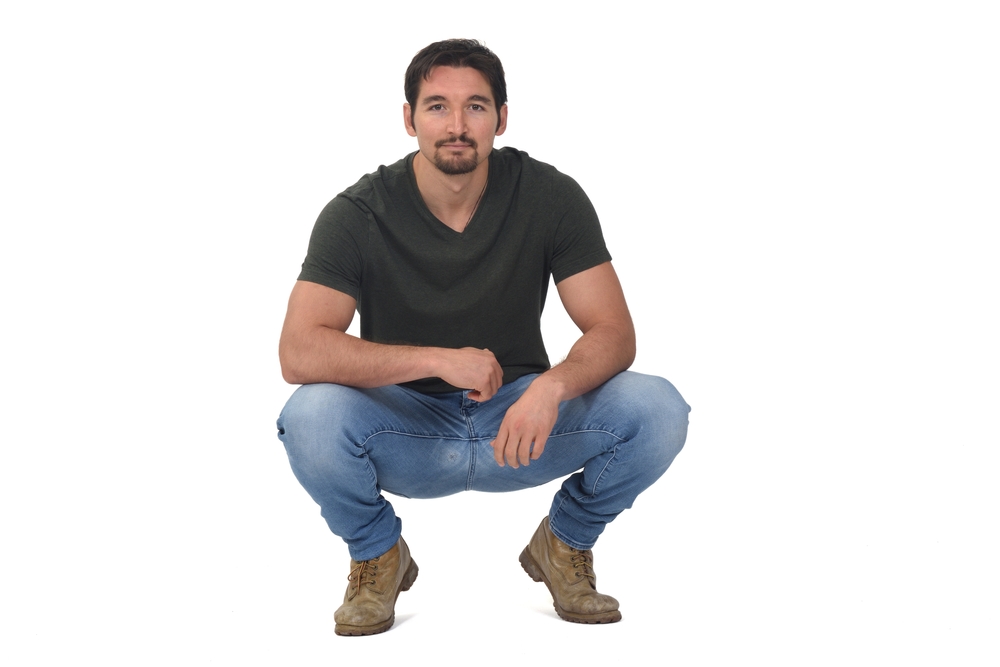
If you’ve gone the majority of your life without squatting, immediately jumping into prolonged deep squatting is likely going to be too intense. Too much too soon could leave you with an injury. It’s also likely that squatting won’t come easily or comfortably to you right away. There are a few reasons why this might be. Jenny Rawlings, an anatomy expert and yoga teacher, says that one reason could be tight calf muscles. This prevents you from being able to dorsiflex your feet in order to keep your heels on the ground. She says, however, that if you want to properly stretch the part of the calf muscle needed for squatting (the soleus), you have to dorsiflex your ankle while your knee is flexed, not straight.
“This is because if we try to stretch soleus with an extended knee, the more superficial muscle tissue of gastrocnemius will stretch first, preventing the stretch from layering down to the deeper soleus. In order to truly stretch our soleus, we must first slacken the overlying gastrocnemius by flexing the knee,” she explains [5].
So how do you fix this problem?
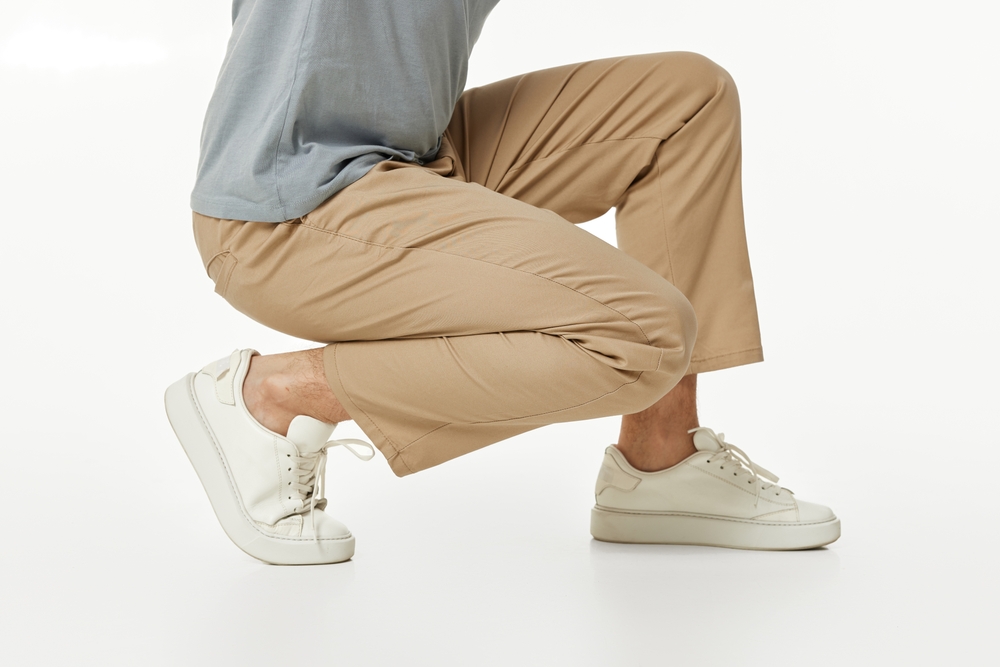
Bowman suggests making squatting a part of your day. If you need to pick something up from the ground, squat instead of bending over. When you’re reading or working at your computer, spend some of that time squatting instead of sitting. If you need some support, you can place a yoga block underneath you.
Schwarz encourages people to break up long stretches of sitting by squatting for thirty seconds every half hour. He emphasizes the importance of good form: move your hips back rather than moving your knees forward, and make sure your knees track over your toes so they don’t cave inward. Try to maintain a long spine and flat feet [3].
Squatting to Feel Grounded

Avni Trivedi, a doula and osteopath based in London says that squatting, or rather, the act of getting low to the ground, comes with emotional benefits, too. “Being on the ground helps you physically be grounded in yourself”—something that’s largely missing from our screen-dominated, hyper-intellectualized lives.” [2]
Beach refers to this as “floor life”, and says that the physical act of grounding ourselves has been instrumental to our development as a species. On that note then, perhaps squatting instead of sitting is the key to “feeling more human”. The benefits are clear, and the antidote is simple: get low to feel better.
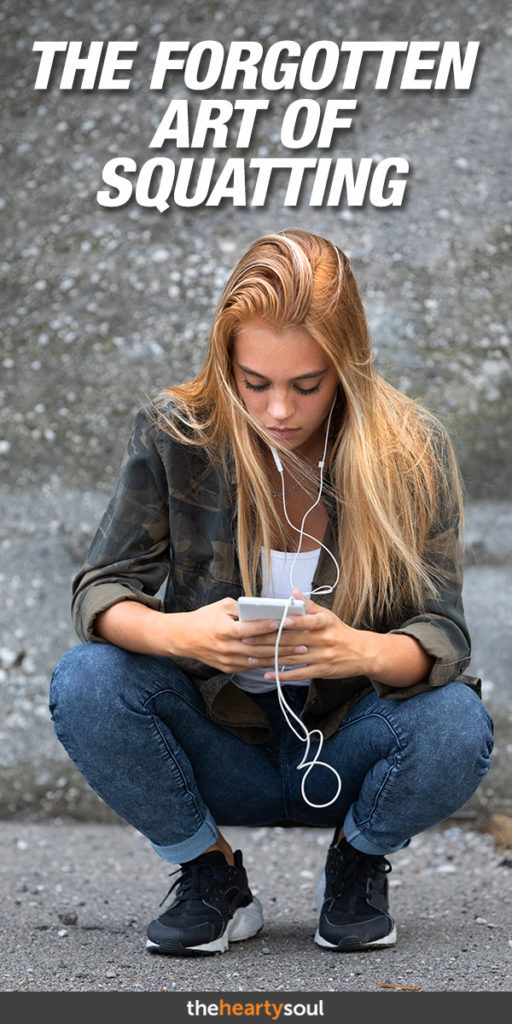
Read More: A Plea for Women to Sit Down on Public Toilets
Sources
- https://www.ncbi.nlm.nih.gov/pmc/articles/PMC4838429/
- https://qz.com/quartzy/1121077/to-solve-problems-caused-by-sitting-learn-to-squat/
- https://health.usnews.com/wellness/articles/2018-04-12/forget-sitting-versus-standing-the-real-question-is-should-you-squat-more
- https://www.acpjournals.org/doi/10.7326/M14-1651
- https://bigthink.com/21st-century-spirituality/what-western-people-stand-to-gain-from-squatting-more-often
- https://sci-hub.tw/https://www.ncbi.nlm.nih.gov/pubmed/12870773
- https://pubmed.ncbi.nlm.nih.gov/23242910/
